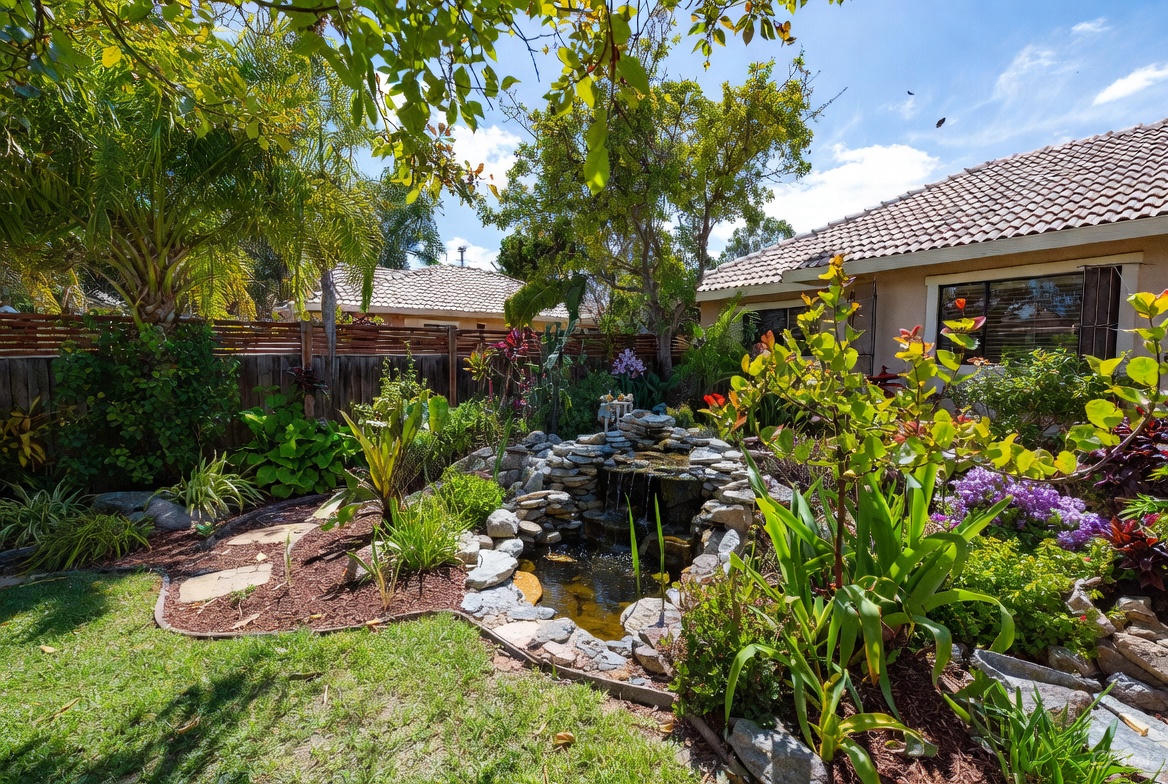
Ornamental grasses offer a fantastic low maintenance and sustainable solution for landscaping design that offer drought tolerance and long life. Grasses generally have four season interest, are mostly drought tolerant, need no staking or pruning, and have no regular insect or disease problems. This means virtually no fertilizers, pesticides, or herbicides are needed for plant growth.
There are over 10,000 varieties and species of ornamental grasses. They represent the fifth largest plant family in the world. Bamboo is considered a grass and is harvested widely in Asia for its thatch, but also for fabric and building material. Both ethanol alcohol and ethanol fuel are produced from grain. Grasses feed most of the world; wheat, millet, rice, and corn are all from the grass family. Ultimately, grass plants house, feed, and clothe most of the world. Grass’s sustainable nature makes them an excellent choice for home gardening as well.
It is easy to substitute a grass for nearly any plant in the perennial bed that a traditional perennial or shrub might fill. Some grasses like plume grass or dwarf pampas grass grow taller than an average person’s height and make an excellent hedge or screen. Feather reed grass makes a wonderful substitute for a fence line, while small carex can be a groundcover solution.
Plant a Naturalized Prairie Grass Garden

Plant a mix of ornamental grasses and perennial native flowers randomly in repeating patterns of odd numbers for a naturalized prairie look. Choose grasses and flowering plants to match the scale of the site; taller plants for larger spaces, smaller plants for small naturalized gardens. Naturalized plantings look beautiful if designed in planting waves; grouping multiple plants together that are the same variety. Then, position feature plants in smaller numbers between and around the waves of larger groupings.
How to Grow Ornamental Grasses
There are two distinct growth habits of ornamental grasses; clumping or rhizomatous. Neat mounds are formed by clumping grass that forms a growth pattern more like a traditional perennial. Depending on the grass type, you can expect some seeding. However, the average grass plant will generally not become invasive and will get larger in circumference over time. Grasses with rhizomes spread by underground stems and can become intensely invasive. Planting the wrong ornamental grass might result in an invasive growing disaster. Understanding the variety of ornamental grass and its growing nature is important to prevent a landscape invasion you do not want.
Plant ornamental grasses when conditions are somewhat rainy to assist with establishment. Most ornamental grasses prefer full sun, but this is not always true, so be sure to understand conditions for the individual grass selected. Amending soil for the planting bed is easy, just mix in two to three inches of organic matter in the planting bed, adding any soil amendments your soil tests have shown you need. If you are planting a native plant, there is no need to amend the soil unless there is an issue; just dig a hole and plant the grass.

Ornamental Grass Maintenance
Grass maintenance is very easy. Maintain ornamental interest all year long by leaving your grass standing all winter. Cut the grass back by shearing it off near the base in spring. Cut back to two or three inches for shorter grasses, and four to five inches for taller grasses. Using a sharp spade, divide the plant in half or spade it back in size should it start to grow out of its planting area. Sometimes the center of grass clumps die out as a plant gets older. If this happens, divide the plant, saving some of the plant for the original planting area and give away or replant the remainder.
Download iScape now and learn ways to add ornamental grasses and more to your landscape designs. Or, if you need some design help, Hire-a-Designer now and let the iScape pro’s help guide you! iScape it!




.jpg)

